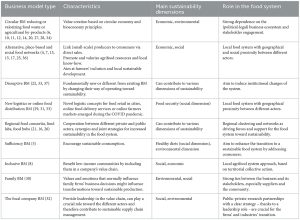The Art of Saving Money – Simple Tips and Tricks to Boost Your Savings
3 min read
Saving money is one of the best ways to achieve financial goals. But, many people aren’t sure how to get started.
Start by learning what’s coming in and going out each month. You can do this by keeping track of your expenses using an expense tracking app or a simple pen and paper.
1. Pay Yourself First
One of the best ways to boost your savings is to “pay yourself first.” This means taking a portion of your income and automatically depositing it into a savings or investment account before spending the rest. This can be a great way to avoid living paycheck to paycheck, and can also help you avoid going into debt or running up credit card balances.
When you pay yourself first, it elevates saving and long-term financial goals like retirement as a mandatory bill that needs to be paid before any other expenses. Of course, this is not an effective strategy if you don’t stick to a budget or are prone to excessive spending. In these cases, you would be better off focusing on other strategies to increase your income or decrease unnecessary expenses.
2. Reduce Unnecessary Expenses
Many people find it difficult to stick to their savings goals because their expenses often exceed their income. A great way to address this issue is to create a budget and examine your expenses to see what can be cut.
When determining your budget, it is important to consider both fixed and variable expenses. Fixed expenses include items such as rent or mortgage payments, car payments and insurance bills. Variable expenses include items like dining out, shopping and entertainment.
Once you have identified your expenses, try to reduce those that aren’t necessary. If you are able to, this may help you to save more money each month! For example, if you’re paying for unnecessary streaming services or magazine subscriptions, these can be easily eliminated.
3. Create a Budget
Creating a budget is the best way to ensure your spending aligns with your financial goals. Start by identifying your monthly income, then listing your expenses. Be sure to include fixed expenses like your rent or mortgage, cell phone bill and garbage fee. Next, identify variable expenses that may vary from month to month such as dining out, groceries and shopping. Finally, account for recurring annual expenses such as your annual eye exam or Sir Barksalot’s veterinary visits.
It’s helpful to track your spending over time to determine realistic averages for necessary items like utilities and food and discretionary items like entertainment. Make it a habit to check in at the end of each month to see how you did. If you spent more than expected, look for ways to adjust your spending habits and get back on track.
4. Adopt Frugal Habits
Frugal habits can help you reduce your spending and live within your means. They can include paying yourself first, creating a budget, and investing wisely. Continually educating yourself about personal finance and investment options is also a crucial frugal habit to adopt.
Another key frugal habit is to avoid impulse purchases. Before making a significant purchase, give yourself at least three to four days to think it over. This will prevent the impulsive part of your brain from taking over, and may make you realize that the item was not really needed in the first place.
It’s important to track all of your expenses, including coffee, household items and cash tips, to see where you’re spending money. Use a spreadsheet or the Spending & Budgeting tool in Online Banking to easily record and categorize your expenses.
5. Invest
Mastering the art of saving money takes time, patience and a deep understanding of personal finances. But once you do, the rewards can be significant.
Start by eliminating debt and building an emergency fund that covers three to six months of expenses. Then, invest the remaining savings into long-term goals. A financial advisor can help you allocate these assets based on your risk tolerance.
You may also want to consider investing in high-yield savings accounts. Some online banks pay up to 4% interest annually, making it possible to boost your balance significantly. Compare today’s rates to find the best savings account for you. You can even set up recurring transfers from your checking account to these accounts at regular intervals to help automate this process.






